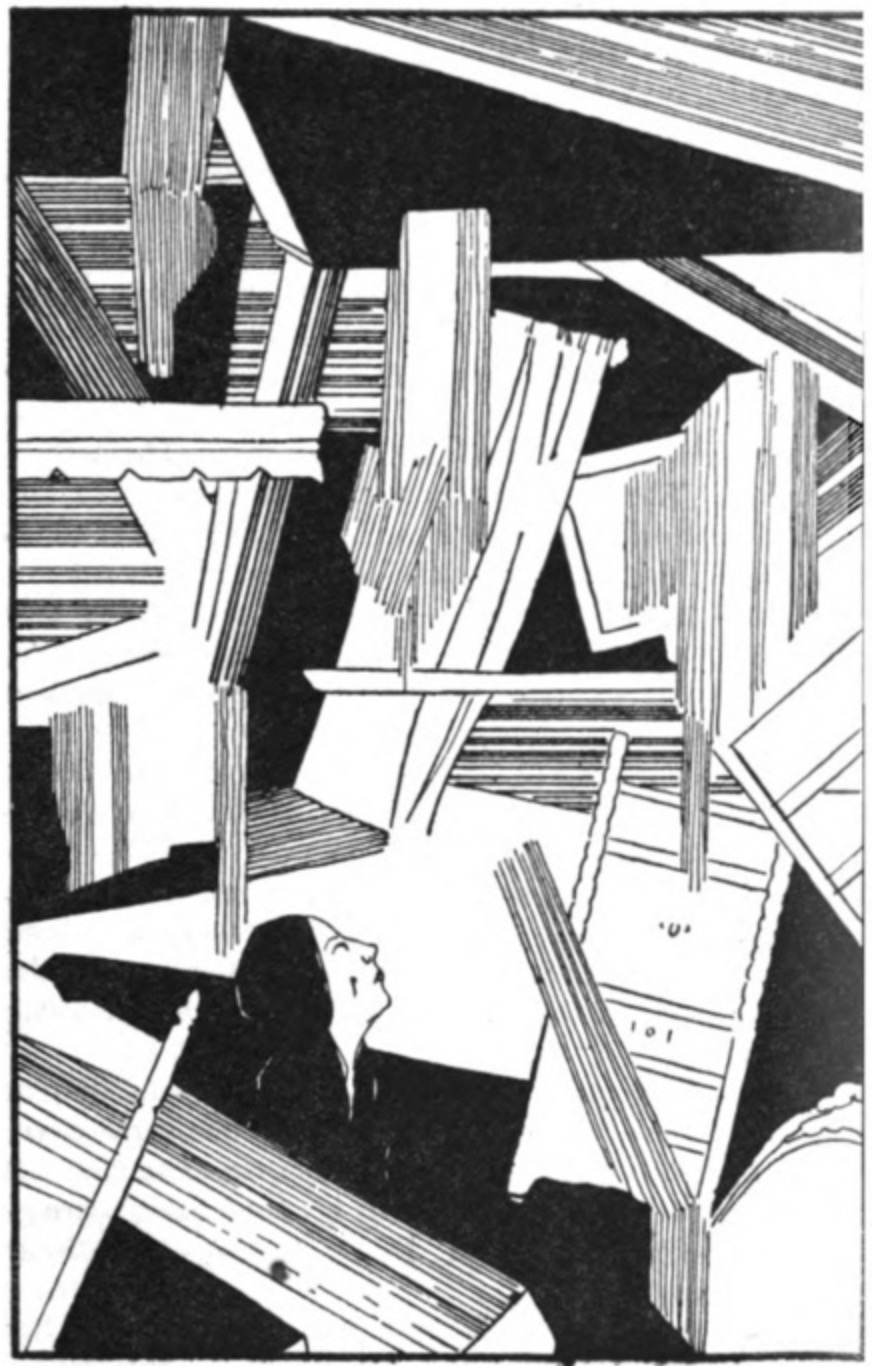WHERE THEIR FIRE IS NOT QUENCHED (8)
By:
February 22, 2024

May Sinclair’s “Where Their Fire is Not Quenched” was first published in the English Review in October 1922 and later appeared in Sinclair’s 1923 collection Uncanny Stories. It has frequently been reprinted in supernatural, horror, and fantasy anthologies; I’m grateful to Paul March-Russell, whose Modernism and Science Fiction encourages us to think of Sinclair as also being a proto-sf author. (PS: Interesting to compare this story’s ending with Sartre’s No Exit, p. 1944.) HiLoBooks is pleased to serialize it here for HILOBROW’s readers.
ALL INSTALLMENTS: 1 | 2 | 3 | 4 | 5 | 6 | 7 | 8 | 9 | 10.
When she came out on to the steps of the church she saw that the road it stood in had changed. It was not the road she remembered. The pavement on this side was raised slightly and covered in. It ran under a succession of arches. It was a long gallery walled with glittering shop windows on one side; on the other a line of tall grey columns divided it from the street.
She was going along the arcades of the rue de Rivoli. Ahead of her she could see the edge of an immense grey pillar jutting out. That was the porch of the Hotel Saint Pierre. The revolving glass doors swung forward to receive her; she crossed the grey, sultry vestibule under the pillared arches. She knew it. She knew the porter’s shining, wine-coloured mahogany pen on her left, and the shining wine-coloured mahogany barrier of the clerk’s bureau on her right; she made straight for the great grey carpeted staircase; she climbed the endless flights that turned round and round the caged-in shaft of the well, past the latticed doors of the lift, and came up on to a landing that she knew, and into the long, ash-grey, foreign corridor lit by a dull window at one end.
It was there that the horror of the place came on her. She had no longer any memory of St. Mary’s Church, so that she was unaware of her backward course through time. All space and time were here.
She remembered she had to go to the left, the left. But there was something there; where the corridor turned by the window; at the end of all the corridors. If she went the other way she would escape it.
The corridor stopped there. A blank wall. She was driven back past the stairhead to the left.
At the corner, by the window, she turned down another long ash-grey corridor on her right, and to the right again where the night-light sputtered on the table-flap at the turn.
This third corridor was dark and secret and depraved. She knew the soiled walls and the warped door at the end. There was a sharp-pointed streak of light at the top. She could see the number on it now, 107.
Something had happened there. If she went in it would happen again.
Oscar Wade was in the room waiting for her behind the closed door. She felt him moving about in there. She leaned forward, her ear to the key hole, and listened. She could hear the measured, deliberate, thoughtful footsteps. They were coming from the bed to the door.
She turned and ran; her knees gave way under her; she sank and ran on, down the long grey corridors and the stairs, quick and blind, a hunted beast seeking for cover, hearing his feet coming after her.
The revolving doors caught her and pushed her out into the street.
RADIUM AGE PROTO-SF: “Radium Age” is Josh Glenn’s name for the nascent sf genre’s c. 1900–1935 era, a period which saw the discovery of radioactivity, i.e., the revelation that matter itself is constantly in movement — a fitting metaphor for the first decades of the 20th century, during which old scientific, religious, political, and social certainties were shattered. More info here.
SERIALIZED BY HILOBOOKS: James Parker’s Cocky the Fox | Annalee Newitz’s “The Great Oxygen Race” | Matthew Battles’s “Imago” | & many more original and reissued novels and stories.
